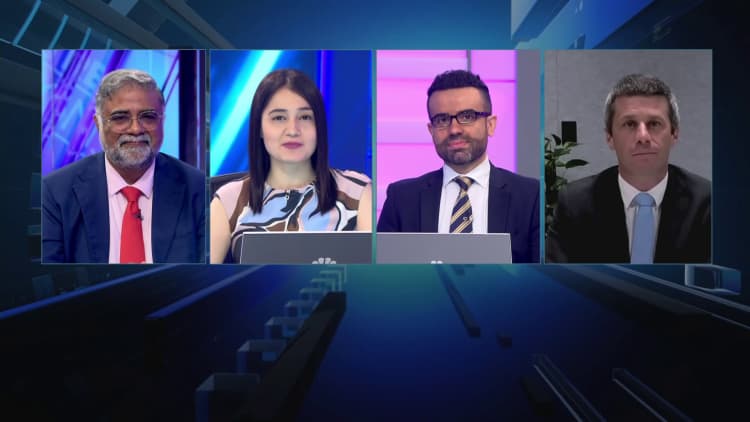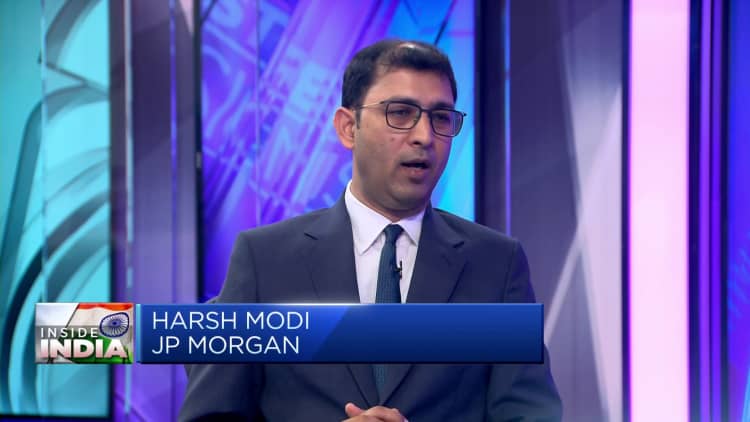
Laborers work at a coastal road project construction site in Mumbai on January 12, 2022.
Punit Paranjpe | Afp | Getty Images
Optimism in India’s growth shows little signs of slowing, but policy continuity will be crucial if it wants to see strong growth in the next five years, Rob Subbaraman, Nomura’s chief economist and head of global markets research Asia ex-Japan, said.
“The Modi administration in Modi 2.0 has done a very good job,” Subbaraman told CNBC last week, referring to the fact that Modi and his ruling Bharatiya Janata Party have won two terms in office since 2014.
India’s elections are underway and Modi is widely expected to win a strong mandate for a third term in office.
Nomura has projected that India’s economy could grow by an average of 7% in the next five years — if the current policies driving growth stay in place, Subbaraman said on Friday.
That projection is much higher than Nomura’s growth outlook for China (3.9%), Singapore (2.5%) and South Korea (1.8%) in the same period.
“With China’s economy slowing, India is likely to be the fastest growing Asian economy this decade,” Nomura said in a recent note.
“Irrespective of the election outcome, policy continuity and a focus on macroeconomic stability are important growth underpinnings,” the bank’s analysts added.

Under Modi’s rule, India’s economy is expected to grow 6.7% this year, compared to China’s predicted growth of 4%, Nomura’s projections showed. Large economies outside Asia like the U.S. could also see slower growth at 2.8% this year.
“The big thing that’s changing in India is investment,” Subbaraman said. “Investment as a share of GDP is starting to rise. All the stars are aligned for private capex to start igniting, including FDI [foreign direct investments].”
While Nomura is bullish on India, the firm’s chief economist for India and Asia (ex-Japan), Sonal Varma, warned in a note that headwinds remain and it’s crucial for India to ensure a stronger economy to boost employment.
“Stronger foundations do not necessarily mean that the economy is invincible. The current growth recovery, while strong, is still uneven, and there are risks from global spillovers.”
Medium-term growth drivers
India has ambitious plans to be a global manufacturing powerhouse, and investments into the sector are expected to boost its economy.
India’s Union Minister for Railways, Communications, Electronics and Information Technology Ashwini Vaishnaw told CNBC in February that India could clock up to 8% annual GDP growth for several years as it focuses on boosting its manufacturing capabilities.
In the interim budget announced earlier this year, the government earmarked 11.11 trillion rupees ($133.9 billion) in capital expenditure for fiscal year 2025, an 11.1% jump from the prior year.
However, Nomura noted that the share of India’s overall exports in global merchandise exports is still only around 2%, and it will continue playing catch up with other countries in Asia.
“The manufacturing takeoff is in its early stages, in our view, and the full impact should become visible over the next 3-5 years.”

India’s financial services sector, which contributes to approximately 7% of GDP, is also playing a more prominent role in hoisting the country’s economic growth, Nomura said.
“Just before the pandemic, India had a non performing asset problem and there was a big cleanup of the banks,” Subbaraman said. “The bank supervision and requirements among banks is better than it has been any time before.”
